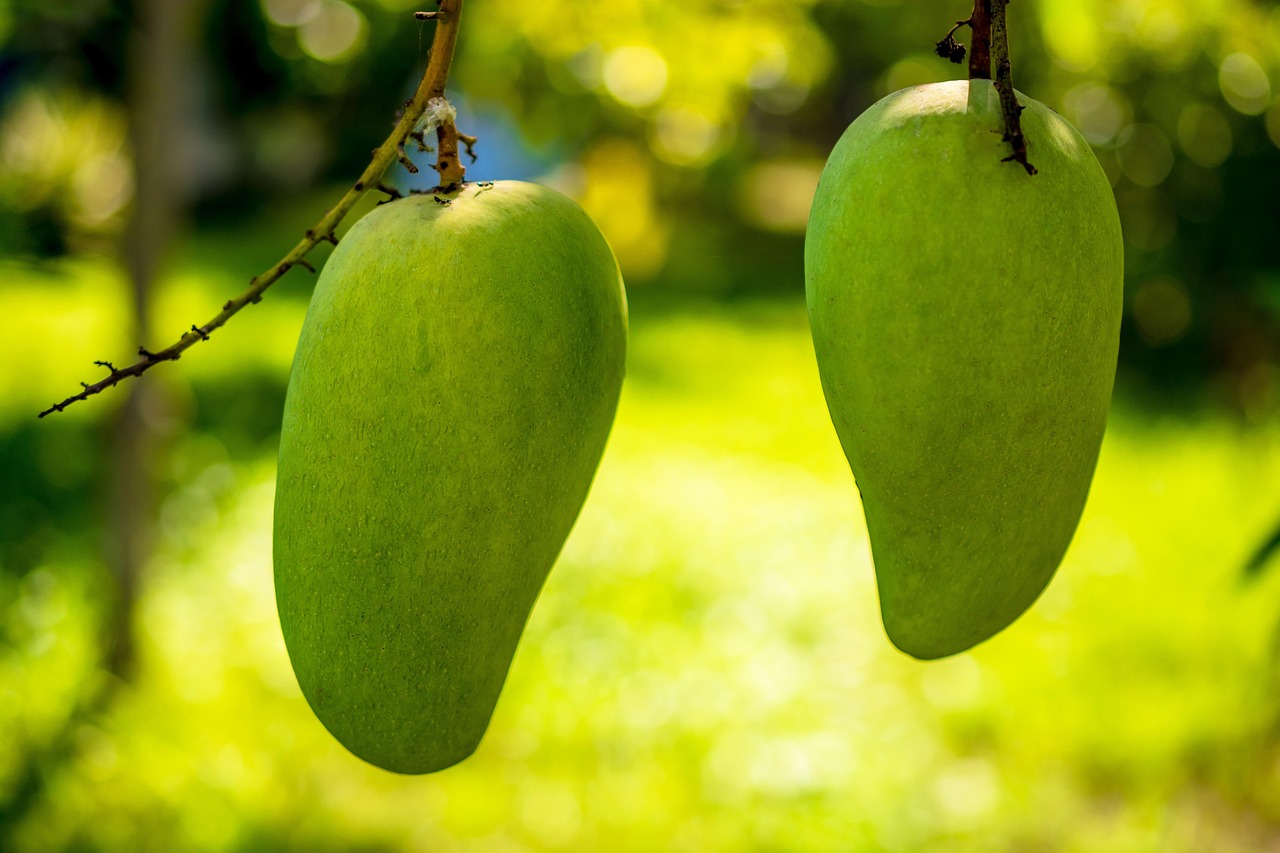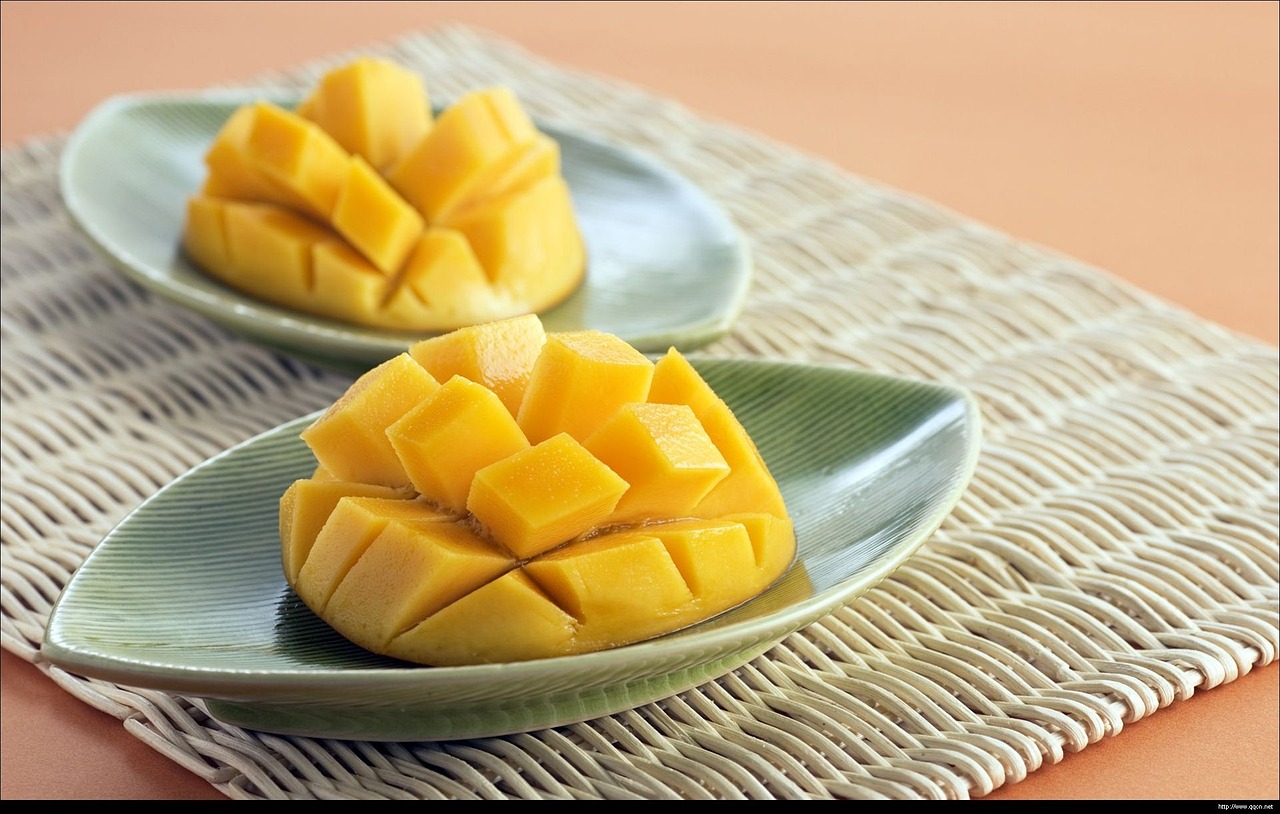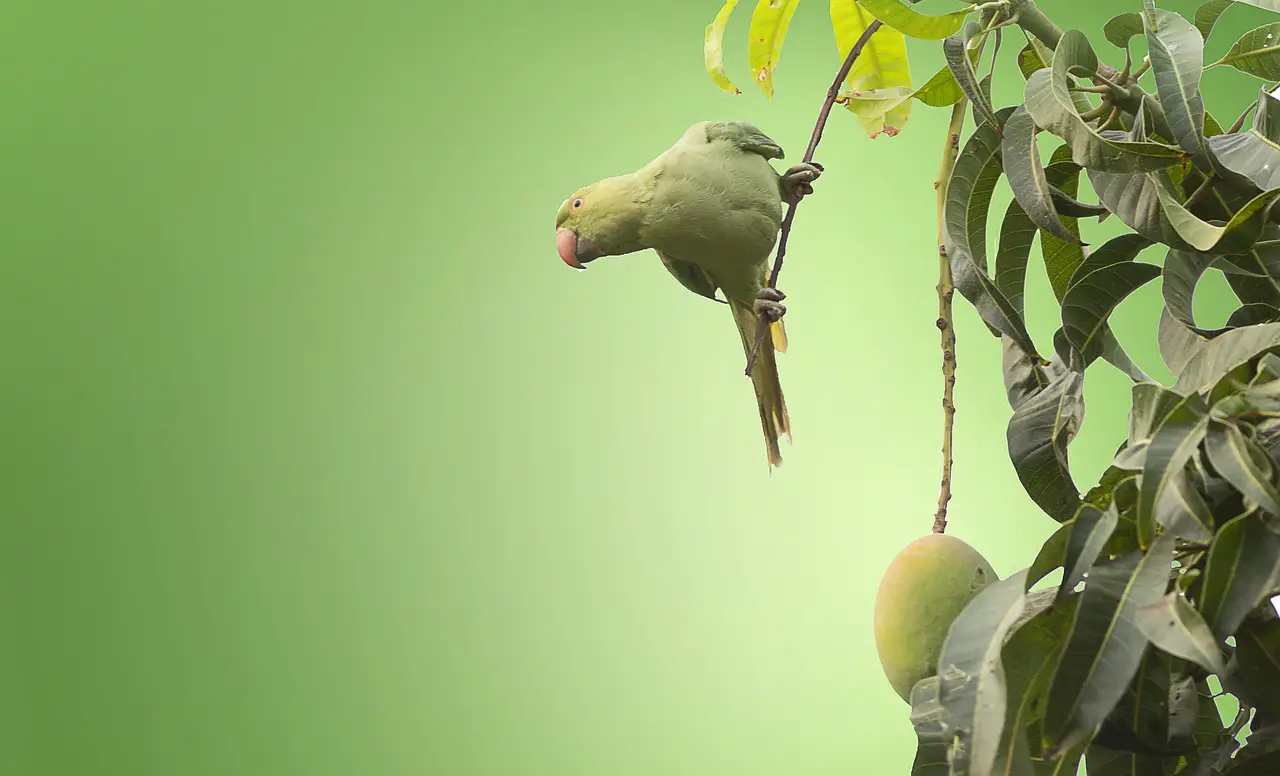Pruning mango trees is essential for maintaining their health, enhancing fruit quality, and improving airflow. Proper techniques ensure robust growth and a bountiful harvest in tropical orchards.
Mango trees (Mangifera indica) are beloved for their sweet, juicy fruits and lush foliage. They thrive in tropical climates, providing both aesthetic beauty and economic benefits to growers. However, to maximize fruit production and keep these trees healthy, regular pruning is crucial. This practice not only shapes the tree but also removes dead or diseased branches, allowing sunlight and air to penetrate the canopy.

The best time to prune mango trees is during the dry season when the tree is not actively growing. This timing helps minimize stress on the tree and reduces the risk of disease. Understanding the right techniques and timing for pruning can significantly influence the yield and quality of the mango crop.
Benefits of Pruning Mango Trees
Pruning offers various benefits that contribute to the overall health and productivity of mango trees. Below are some key advantages:
- Improved Air Circulation: Pruning helps to thin out overcrowded branches, promoting better air circulation within the canopy.
- Increased Sunlight Exposure: By removing excess foliage, pruning allows more sunlight to reach the inner branches, which enhances photosynthesis.
- Enhanced Fruit Quality: Well-pruned trees typically produce larger and tastier fruits due to improved nutrient distribution.
- Disease Prevention: Removing dead or diseased branches reduces the risk of infections spreading throughout the tree.
- Shape Maintenance: Regular pruning helps maintain a desirable shape, making it easier to harvest fruit.
Understanding Mango Tree Growth Patterns
Mango trees can grow quite large, often reaching heights of up to 100 feet in optimal conditions. However, most commercial growers prefer to maintain a manageable height for easier harvesting. Understanding how these trees grow is essential for effective pruning. Mango trees have a tendency to develop a dense canopy, which can hinder light penetration and air circulation.

The growth pattern can be categorized into three main stages:
- Juvenile Stage: This stage lasts for about 2-3 years, during which the tree focuses on vegetative growth. Pruning during this phase encourages a strong framework.
- Mature Stage: From approximately 4 years onwards, the tree starts producing fruit. Pruning should focus on maintaining balance and removing any competing branches.
- Declining Stage: As trees age, they may experience reduced fruit production. Pruning in this stage involves heavy thinning to rejuvenate the tree.
Essential Pruning Techniques
To effectively prune mango trees, certain techniques should be employed. These methods help ensure optimal growth and productivity:
- Crown Thinning: This technique involves removing selected branches from the crown to increase light penetration and airflow.
- Crown Raising: Lower branches can be pruned to allow more space for harvesting and for preventing damage during storms.
- Crown Reduction: This method shortens branches that have outgrown their space, helping to maintain a manageable height.
- Heading Back: Cutting back a branch to a bud encourages new growth and helps shape the tree.
Tools Required for Pruning
Using the right tools is essential for effective pruning. Below is a list of tools that should be part of any mango tree pruning kit:

| Tool | Description | Purpose |
|---|---|---|
| Hand Pruners | Small, manual cutting tool | Ideal for small branches and fresh cuts |
| Loppers | Larger cutting tool with long handles | Used for thicker branches |
| Saw | Manual or powered saw | For heavy-duty cuts on larger branches |
| Pruning Shears | Specialized scissors for fine cuts | Useful for delicate trimming |
| Safety Gear | Gloves, goggles, and protective clothing | Ensures safety while pruning |
Having these tools on hand will make the pruning process more efficient and effective. Proper maintenance of tools is equally important; sharp blades make cleaner cuts, reducing stress on the tree. Before beginning any pruning activity, it is essential to assess the tree’s condition. This assessment will guide decisions on which branches to remove and how to shape the tree for optimal growth.
Timing Your Pruning
Timing is a critical factor in the successful pruning of mango trees. Pruning at the appropriate time can greatly enhance the tree’s recovery and future growth. Generally, the best time to prune mango trees is at the end of the dry season, just before or during the flowering period.
Here are some important considerations regarding timing:

- End of Dry Season: This is when the tree enters a period of dormancy, making it less susceptible to stress from pruning.
- Before Flowering: Pruning before flowering encourages better fruit set. It allows the tree to focus its energy on producing quality fruit rather than maintaining excess foliage.
- Avoid Rainy Season: Pruning during the rainy season can increase the risk of disease due to excess moisture and humidity.
Pruning Techniques for Different Tree Ages
The techniques used for pruning mango trees can vary significantly based on their age and growth stage. Each stage requires different approaches to ensure optimal health and productivity.
Juvenile Trees (0-3 Years)
For young mango trees, the primary goal is to establish a strong framework. The following techniques should be employed:
- Formative Pruning: Focus on shaping the tree to develop a strong central leader and evenly spaced branches.
- Light Thinning: Remove any weak or competing branches to encourage healthy growth.
- Encouraging Side Shoots: Pinch back the tips of new growth to promote branching.
Mature Trees (4-10 Years)
Mature mango trees require different care to maintain productivity:
- Selective Thinning: Remove older, less productive branches to redirect energy toward younger branches that bear fruit.
- Height Management: Shorten excessively tall branches to maintain a manageable height for harvesting.
- Branch Spacing: Ensure that branches are well-spaced to allow air circulation and light access.
Older Trees (10+ Years)
As mango trees age, they may experience reduced yields. The following strategies can help rejuvenate older trees:
- Crown Thinning: Remove dense foliage to improve light penetration.
- Renewal Pruning: Cut back older branches to a bud or lateral branch to encourage new growth.
- Heavy Pruning: In extreme cases, more aggressive pruning may be necessary to stimulate new growth and fruiting.
Common Mistakes in Pruning Mango Trees
Even experienced growers can make mistakes when pruning mango trees. Being aware of these common pitfalls can help improve results:
- Over-Pruning: Removing too much foliage can stress the tree and reduce fruit production. It is essential to strike a balance.
- Poor Cuts: Making improper cuts can lead to disease entry points. Always use clean, sharp tools and make cuts at an angle.
- Ineffective Timing: Pruning at the wrong time can hinder growth. Stick to the recommended pruning windows for best results.
- Lack of Planning: Not assessing the tree’s condition before pruning can lead to haphazard cuts. A clear plan helps ensure effective pruning.
Post-Pruning Care
After pruning, proper care is essential to help the mango tree recover quickly. Here are some post-pruning practices that contribute to successful recovery:
- Watering: Ensure the tree receives adequate water post-pruning but avoid overwatering. This helps reduce shock and promotes recovery.
- Nutrient Application: Apply a balanced fertilizer to support new growth. This is especially critical if significant pruning has occurred.
- Pest Control: Monitor for pests and diseases after pruning. The cuts can attract pests, so be vigilant in protecting the tree.
Pest and Disease Management Post-Pruning
Pests and diseases can pose a significant threat to mango trees, particularly after they have been pruned. Implementing effective management strategies is crucial:
- Inspect Regularly: Check for signs of pests or disease following pruning. Early detection makes treatment more effective.
- Use Organic Treatments: Employ organic pesticides or fungicides if necessary, as these are less harmful to beneficial insects and the environment.
- Promote Biodiversity: Encourage beneficial insects in your orchard, as they can help control pest populations naturally.
Caring for mango trees after pruning is as important as the pruning process itself. By following these guidelines, growers can ensure their trees remain healthy and productive for many years.
Understanding Mango Tree Varieties
Different varieties of mango trees may require slightly different pruning techniques and care. Understanding the characteristics of these varieties can help growers apply the best practices for each type. Here are some popular mango varieties commonly grown in tropical orchards:
- Haden: Known for its sweet, juicy flavor and vibrant color, Haden mangoes are a favorite. They have a moderate growth rate and benefit from regular pruning to enhance fruit quality.
- Tommy Atkins: This variety is popular for its long shelf life and resistance to disease. It requires careful pruning to maintain its shape and promote air circulation.
- Kent: Kent mangoes are known for their sweet taste and minimal fiber. They thrive with strategic pruning, particularly during their formative years.
- Alphonso: Often referred to as the “King of Mangoes,” Alphonso mangoes have a rich flavor. Pruning is essential for maintaining their structure and maximizing fruit production.
Pruning for Specific Goals
Growers may have specific goals when pruning mango trees. Understanding these goals can help determine the most effective pruning techniques.
Maximizing Fruit Production
If the primary goal is to maximize fruit production, consider the following techniques:
- Thinning Out: Remove excess branches to allow more energy to flow to remaining branches, enhancing fruit set.
- Encouraging New Growth: Regularly cut back older branches to stimulate new, fruitful growth.
- Maintaining Tree Height: Keep trees at an accessible height to facilitate easier harvesting.
Improving Tree Health
To prioritize tree health, focus on these strategies:
- Removing Diseased Wood: Promptly remove any dead or diseased branches to prevent the spread of infection.
- Crown Thinning: Improve air circulation within the canopy by selectively removing crowded branches.
- Balancing Growth: Ensure that no one side of the tree is overgrown, maintaining a balanced structure that can better withstand storms.
Environmental Factors Affecting Pruning
The environment in which mango trees grow can significantly impact their development and how they should be pruned. Awareness of these factors allows for better decision-making regarding pruning strategies.
Soil Quality
The soil quality directly affects the health of mango trees. Well-draining, nutrient-rich soil promotes vigorous growth. Consider these points regarding soil:
- Nutrient Testing: Conduct regular soil tests to determine nutrient levels and pH balance.
- Fertilization: Apply organic fertilizers based on soil test results to ensure trees receive necessary nutrients.
- Aeration: Implement practices such as mulching to improve soil aeration while preventing weed growth.
Climate Conditions
Mango trees thrive in warm tropical climates. However, they can be sensitive to extreme weather conditions. Keep these considerations in mind:
- Temperature Variations: Monitor temperature fluctuations that may affect tree health. Protect trees from frost if applicable in your region.
- Humidity Levels: High humidity can increase disease risk. Pruning to enhance airflow can mitigate this issue.
- Rainfall Patterns: Heavy rainfall can lead to root rot. Prune during dry seasons to reduce stress on the tree.
Integrating Technology in Pruning Practices
The integration of technology into agricultural practices has transformed how growers manage their mango orchards. Here are some ways technology can enhance pruning practices:
Drones for Tree Assessment
Drones equipped with cameras can provide aerial views of orchards, allowing growers to assess tree health and growth patterns without extensive ground inspections. This technology helps identify areas needing pruning more efficiently.
Mobile Applications
Several mobile applications are available to assist growers in tracking their pruning activities. These apps can help manage schedules, log pruning actions, and send reminders for future care tasks.
Sensors for Soil Monitoring
Sensors that monitor soil moisture and nutrient levels can inform growers when to prune or apply fertilizers. This data-driven approach helps optimize tree health and productivity.
The Role of Education and Community Support
The success of pruning mango trees often relies on continuous learning and community support. Engaging with local agricultural extensions or joining farmer cooperatives can provide valuable resources:
- Workshops and Training Sessions: Attend workshops organized by agricultural extensions to learn about best practices in pruning and orchard management.
- Networking with Other Growers: Share experiences and techniques with fellow mango growers to gain insights into effective methods tailored to specific local conditions.
- Accessing Research and Resources: Stay updated on the latest research in mango cultivation, including pest management strategies and new pruning techniques.
This support network helps mango growers make informed decisions about their pruning practices, ultimately leading to healthier trees and improved yields.
Adapting Pruning Techniques to Climate Change
As climate change continues to impact agricultural practices worldwide, mango growers must adapt their pruning techniques to mitigate its effects. Changes in temperature, humidity, and rainfall patterns can influence tree health and fruit production. Here are some strategies for adapting pruning practices in the face of climate change:
- Monitoring Weather Patterns: Keep a close eye on seasonal weather patterns to determine the best times for pruning. Adjusting schedules based on projected weather conditions can help protect trees from stress.
- Implementing Water Conservation Techniques: As water availability becomes more variable, it may be necessary to adopt water-efficient irrigation methods. Pruning practices should align with these techniques to ensure trees receive adequate hydration.
- Incorporating Climate-Resilient Varieties: Consider planting mango varieties that are more resilient to climate stressors. These varieties may require different pruning approaches to maximize their potential.
Economic Considerations in Pruning Practices
The economic viability of mango orchards is closely tied to effective pruning practices. Proper pruning not only enhances fruit quality but also impacts overall profitability. Here are some economic factors to consider:
- Cost of Labor: Pruning requires skilled labor, which can be a significant expense. Investing in training for workers can enhance efficiency and lead to better results in the long run.
- Return on Investment: An initial investment in proper pruning techniques can pay off through increased fruit yields and improved quality, leading to higher market prices.
- Market Demand: Understanding market trends can help growers decide how much to prune and when. If there is high demand for larger, high-quality fruits, adjusting pruning methods accordingly can maximize profits.
Sustainability Practices in Mango Orchards
Sustainable practices in mango orchards can enhance the benefits of pruning efforts. These practices not only promote tree health but also improve environmental outcomes. Some sustainability practices include:
- Organic Farming Techniques: Utilizing organic fertilizers and pest control methods reduces chemical inputs and promotes a healthier ecosystem within the orchard.
- Soil Health Management: Implementing cover cropping and reduced tillage can improve soil structure and fertility, benefiting the mango trees over time.
- Biodiversity Promotion: Encouraging beneficial insects and planting companion crops can create a more balanced ecosystem, reducing pest pressures naturally.
Future Trends in Mango Cultivation
The future of mango cultivation is likely to see advancements in technology, breeding techniques, and consumer preferences. Growers should stay informed about these trends to remain competitive:
- Precision Agriculture: The use of data analytics and technology will allow growers to make more informed decisions about when and how to prune, leading to optimized practices tailored to specific conditions.
- Genetic Research: Ongoing research into mango genetics may yield new varieties with improved disease resistance and yield potential, which will influence pruning strategies.
- Health-Conscious Consumers: As consumers become more health-conscious, there may be an increasing demand for organic and sustainably grown mangoes. This shift could prompt growers to adopt more environmentally friendly practices.
Final Thoughts
Pruning mango trees is an essential practice that directly impacts the health, productivity, and quality of the fruit produced in tropical orchards. By understanding the various techniques, timing, and considerations involved in pruning, mango growers can cultivate more resilient and fruitful trees.
The integration of sustainable practices, technological advancements, and education plays a vital role in enhancing the effectiveness of pruning efforts. As growers adapt to changing environmental conditions and market demands, ongoing learning and community support will be crucial for success in the evolving landscape of mango cultivation.
Ultimately, proper pruning not only contributes to bountiful harvests but also fosters a healthier ecosystem within mango orchards. By prioritizing best practices in pruning, growers can ensure the longevity and sustainability of their mango trees for generations to come.
